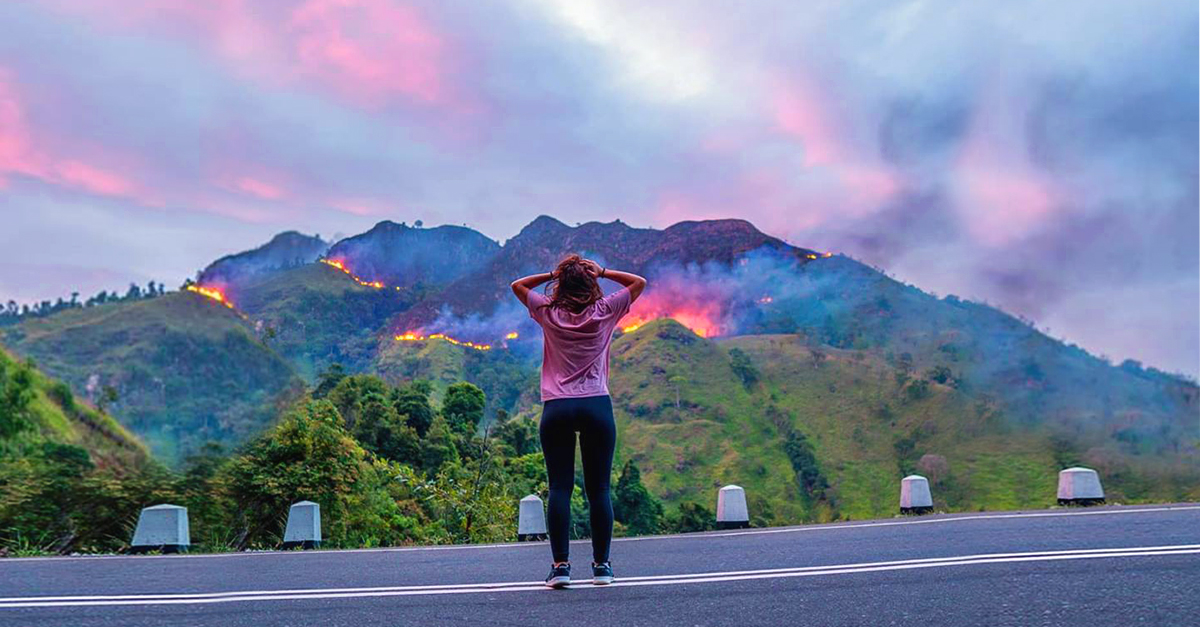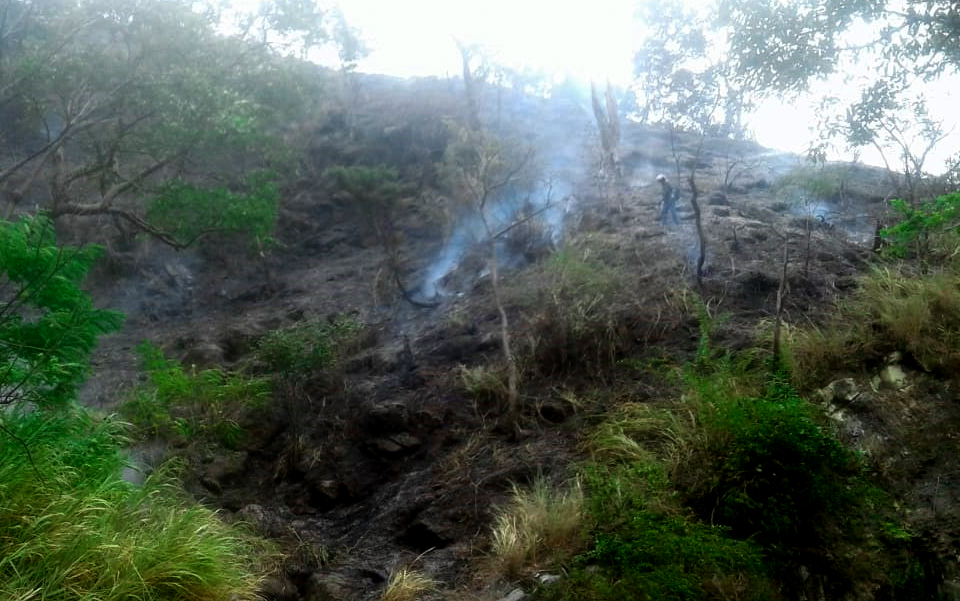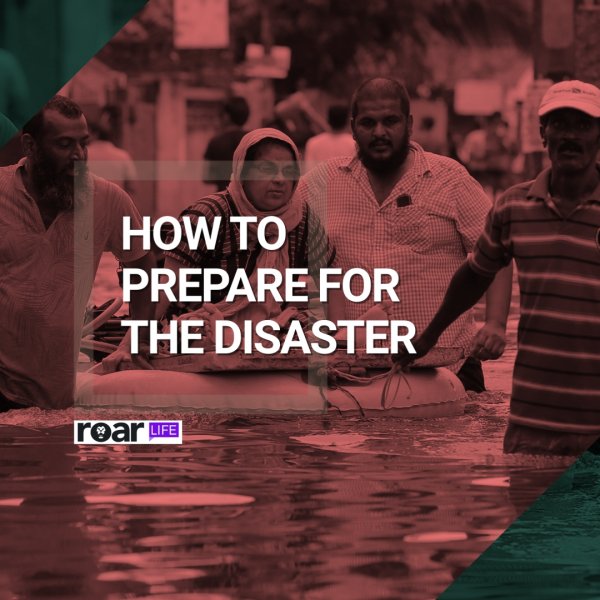
Deep in the forests of the Amazon, wildfires burn fiercely. The magnitude of the damage is yet unknown, but so widespread over northwest Brazil, that the fire was visible from space. The massive forest has burned for over seven weeks continually now, sparking a global conversation on heightened carbon dioxide emissions affecting the climate.
As one of the world’s largest carbon dioxide ‘sinks’—a natural reservoir that removes CO2 from the atmosphere and replaces it with oxygen—the burning of the Amazon will contribute to an exponential increase in global temperatures.
But as the world watched the Amazon burn, fifteen thousand kilometres away, in Sri Lanka, Ella was on fire.

Deshan Ratnayake, a resident of Ella, said forest fires are a common occurrence. “This happens every year in the range borders on the Mountain Reserve,” he told Roar Media. “Last year, a fire erupted on the mountain opposite to my home, and spread within a few hours.”
Ratnayake said that the fires were caused by residents trying to clear land for paddy cultivation, as well as those that set fire to the forest to smoke out small animals that could be hunted for meat.
“People are never arrested for these kinds of things,” he said. “And many pay off the Police in order to escape arrest.”
The fire at the Ella Rock forest reserve was first reported on August 22 morning. By that time, the Amazon forest fire has been burning for three weeks and the local incident, which otherwise fails to garner national attention, quickly gained the attention of the public and the authorities.
The Disaster Management Centre’s (DMC) Badulla District Assistant Director E. M. L. Udaya Kumara told Roar Media that since August 22, three fires were reported in the area, and devastated approximately 20 acres of the Reserve.

“The first fire was reported with the Ella rock in its epicentre, on August 24. Another broke out at the Maragalakanda forest reserve, several kilometres south, and firefighters found it difficult to reach the fire in order to douse it at first,” Kumara said, explaining that the fire has also caused rocks to fall on to the Ella-Wellawaya main road endangering motorists passing through.
The windy conditions that prevailed at the time, Kumara noted, was one reason why the fire in Ella spread so quickly. However, firefighters, with the assistance of residents, wildlife officers and the members of the Sri Lanka Air Force based at the Diyatalawa camp, brought the fires under control.
“The third fire was reported within the vicinity of the Ravana Ella [three kilometres north of the Ella Rock] on August 25,” Kumara said, adding that the DMC had deployed teams to control and douse the fire immediately. “With the assistance of the Sri Lanka Army, we managed to douse the fire later that day,” he said.
It is of some concern that wildfires have begun to occur frequently in many areas in the dry zones of the country. “Fires are expected during June, July and August when the weather is especially dry,” Kumara explained. “[And] depending on how the monsoons shift, we have officers ready to combat any and all activities in the areas.”
However, the situation is far more severe than imagined. Earlier this year, the DMC reported that man-made forest fires have increased one hundred percent. And while the unmitigated fires cause immense damage to human settlements and flora and fauna in the short-term, it has various long-term consequences as well.
The more serious of these is the damage to the ecozone it erupts in.
“There are many water bodies connected to the streams and such that run through Badulla. A forest fire contaminating these streams would mean that water everywhere would be affected,’’ Kumara explained. This results in a lack of drinking water and a huge maintenance cost is incurred for clean up. An algae bloom— or a rapid increase of algae in water due to the high presence of nutrients following a forest fire can also lead to contamination of water resources.

Statistics indicate that while 58 cases were reported in 201, the number had doubled to 102 by the next year. Alarmingly, in April, even before the midpoint of 2019, 50 forest fires were reported.
This July alone, over 500 acres of forest cover was destroyed in a fire in the Monaragala district. And as Additional Conservator General of Forests at the Forest Department Lal Abeygunasekara pointed out— in Sri Lanka, wildfires do not erupt naturally.
“All the wildfires that break out are due to human activity. And the laws against those who cause forest fires are extremely severe. Strict action can be taken against those who induce wildfires under the Forest Conservation Act,” he said.
But it is clear, the Forest Conservation Act is not implemented strictly enough to prevent recurring, and increasing forest fires
“It’s almost impractical to find and arrest suspects who start these fires,” Abeygunasekara explained further.
The Ella Police reported the August fire had erupted at an isolated area adjacent to the forest Reserve. Investigators have concluded that whatever the cause of the fire, the speed in which it spread was directly due to the dry period that the area was experiencing. And due to these factors, Forest Conservation Act notwithstanding, no arrests have been made thus far.

.jpg?w=600)





